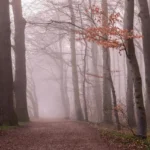#01: Art Reinvented by AI:
A Conversation with Benoît Theunissen
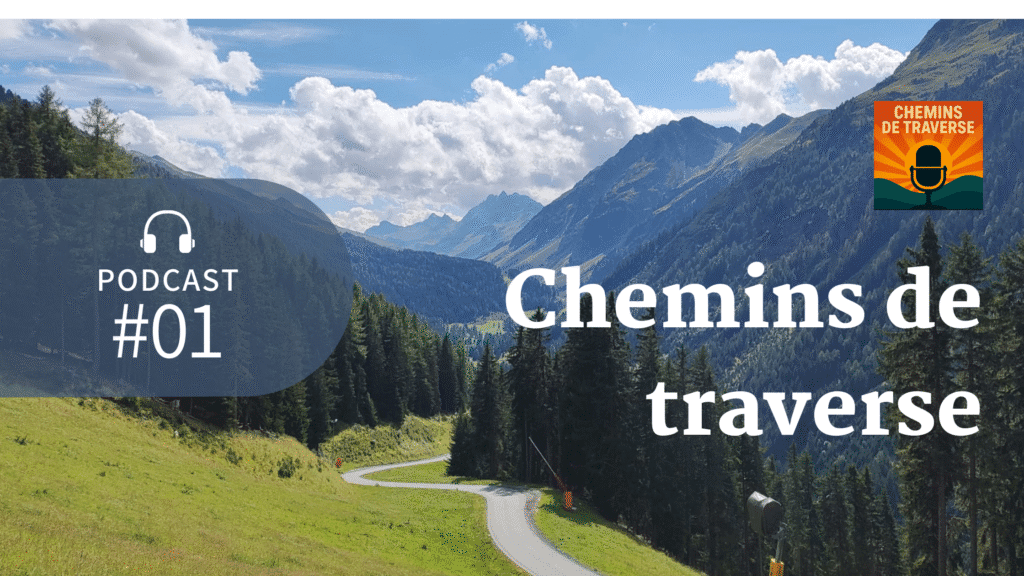
In this first episode of Chemins de traverse, I meet Benoît Theunissen, an artist who, far from suffering under the disruptive force of AI in creative fields, has turned it into his accomplice. I asked him to share the plan he devised in the face of this so-called threat.
We once thought creatives were untouchable. But AI, ruthless and relentless, has already begun clearing the stage. Five artists told The Guardian how their trades were swallowed up: no more budget, no more patience, no more human touch. What took their place? Voice avatars, illustrations churned out in thirty seconds, texts that are “efficient” yet sterile. The promise: “With AI, you can do more with less.”
Benoît Theunissen: Taming AI Without Losing His Art
In a world where AI intrudes everywhere, some creatives are swallowed whole. Benoît Theunissen, however, doesn’t endure the storm — he turns it into an ally. In this first episode of Chemins de traverse, he explains how.
(Yes, the interview is in French — one day I might switch to English. In the meantime, click here to read the transcript in English.)
Nathalie Evoluxis
While illustrators are having their styles stolen, voice actors are being cloned without consent, and graphic designers are seeing their jobs replaced by a prompt, some people are choosing another path.
Benoît Theunissen is a journalist specializing in economics and politics. At the same time, he is developing an artistic practice that gives a central place to artificial intelligence.
It was during an informal coffee machine conversation about AI that I first met him. I asked him to reveal his secret plan in the face of the threat posed by artificial intelligence. But the question remains: is it truly effective?
Hello Benoît, welcome to the podcast.
Benoît Theunissen
Hello Nathalie, thank you for having me on your podcast. I’m truly honored.
Nathalie Evoluxis
It’s a pleasure. To start, can you introduce the style of your work?
Benoît Theunissen
So, it’s a style I’ve developed over the last two or three years, you see, alongside the rise of the main AI tools. Before that, my photography practice was completely conventional, very figurative, which gradually became abstract. But thanks to AI, I decided to move toward a slightly more surrealist style—drawing inspiration from René Magritte or Dalí, for example—to integrate archetypes, symbols, or elements into the landscapes of my work that could convey meaning.
And in the end, I realized I was creating actual paintings, to the point where sometimes I even wonder if I’m still a photographer.
Nathalie Evoluxis
Tell me, aren’t you afraid that one day AI will make better works than yours?
Benoît Theunissen
I’ve set up safeguards that are entirely natural and implicit in my creative process. First of all, it’s out of the question for me to present myself as an AI artist, as many do on Instagram, where it’s the big trend right now. It’s not just about writing a prompt and then—bam!—you get a wow image. Sure, that’s possible, but I don’t see myself in that. And as you can tell from this, I don’t outsource my entire creative process to AI.
I try to keep a pragmatic and critical approach, without rejecting the benefits of artificial intelligence. I use AI only for very specific parts of my process. If you’d like, I can elaborate on that for your audience.
Nathalie Evoluxis
Yes, why not.
Benoît Theunissen
Alright, with pleasure. As I said, I limit my use of AI to specific parts of my creative process. It starts with ideation and research. Usually, I have an intuition about a theme I want to explore, and as I mentioned earlier, I like to use archetypes from collective memory, from the collective unconscious, and draw symbols from myths—ancient ones, or from great ancestral civilizations. I like to make connections between all that.
Once I have an idea in mind, I use AI to do more in-depth research on themes that inspire me. That way, I can sharpen my grasp of archetypes and symbols, building solid symbolic, dreamlike, and mythological knowledge before moving into production.
Since I integrate these symbols into my photographic images, it’s sometimes difficult to stage them in a studio. For example, I recently reinterpreted the myth of Icarus, but included the Cretan Minotaur. Recreating the Minotaur in a studio would be very complicated. Doing it with AI saved me enormous time and gave me broader creative freedom than if I had to work with actors.
So I use AI to integrate complex imaginary elements. I also use it to create new atmospheres—overlays, layers that add light effects or backgrounds, creating a dreamlike or surreal atmosphere in some of my works.
Then there’s the editing stage—contrast management, tones, colors, white balance, etc. I sometimes use AI-powered editing tools to technically improve the image without sacrificing quality.
Finally, I always conduct a critical analysis at the end of my creative process. I submit my works to AI and ask it to act as an art critic—to analyze the aesthetics, composition, style, technique, and also to dig deeper into interpretation, archetypes, and influences that may have shaped my work. This feedback sometimes lets me immediately fine-tune certain aspects of my pieces.
Nathalie Evoluxis
Alright, I understand your approach better now. Unlike many who use AI as a substitute for skills, you add it to your own work. MIT published a report warning users of AI about the risk of losing creativity and even cognitive abilities by relying on it too much. How do you perceive these risks?
Benoît Theunissen
That’s an article I read, and it really struck me. I already had a pragmatic, critical outlook on AI, even while being aware of its benefits in my process. But it pushed me to embody that critical stance even more. I realized I couldn’t outsource, so to speak, too much of my creative process to AI.
Yes, it’s a shortcut, a time-saver, and even a productivity boost—because, let’s face it, artists are content producers like anyone else, so there’s competition. Using AI today gives you a competitive edge. But you can’t become lazy. Sure, you can delegate simple, repetitive tasks to AI, but you need to stay capable of doing them yourself. One day, you might have no internet connection, or you might be working somewhere without access to AI.
An artist must know how to paint and use a brush. A writer must know how to use a keyboard and a text editor. A digital artist must know how to use Photoshop, their camera, and their editing tools. You can’t reinvent the wheel—you must be able to work without the machine. Otherwise, I fear losing legitimacy, but also simply losing the magic of the technique I spent years building.
To counter this risk, I force myself to return to fundamentals: I use Polaroids, I shoot with my phone, and document daily life photographically to keep my eye sharp. My eye is my main tool, before any camera. I try to find originality in everyday banality—angles, details, oddities I capture and sometimes print in notebooks, where I also write. I know it may sound odd for a visual artist to write, but it’s crucial. I document my creative process in essays, reflective notes, poetry, and even haikus. Over the years, these notebooks accumulate, and I later draw ideas from them to fuel my creativity. So the works you see today are the result of years of reflection, written and unconscious. That’s why I refuse to give in to the immediacy and ease AI could offer.
Nathalie Evoluxis
Excellent. So if one day you lose access to AI, you’d still bounce back?
Benoît Theunissen
Exactly. And that’s essential. Also, not all my works use AI. Some are entirely analog, or “organic,” if I can use that metaphor.
Nathalie Evoluxis
And yet, while your approach balances pure creation and technology, I see you also exploring Web3 and the Metaverse. Do you think that’s the future of art?
Benoît Theunissen
Yes and no. Web3 includes NFTs, blockchain, the Metaverse, and even AI nowadays. The general public often lumps these together. As a visual artist using AI, I think you must stay critical and pragmatic. That’s my guiding principle.
Nathalie Evoluxis
What are NFTs?
Benoît Theunissen
Non-fungible tokens. They let you exchange artworks, but also any kind of item, distributed via blockchain—Bitcoin, Ethereum, and many others. There are so many blockchains now, it’s hard to keep track.
I experimented with NFTs to distribute my work. The technology is mature, but mass adoption is lacking. It’s still limited to niche, highly specialized enthusiasts. So for now, I distribute my digital works through more classic channels: galleries, my website, and physical pieces.
But with the Metaverse, it’s a different story. Right now, I’m creating my own virtual gallery, and the feedback has been… honestly, I don’t even have the right word. It’s impressive, even for me. It allows clients to experience the work in a gallery-like space, even through a screen. Tomorrow, it will be through VR headsets. But even now, through a screen, the effect is—pardon me—wow. Truly unusual. It’s very different from consuming art on a website or Instagram.
Even better, you can invite visitors to your gallery, guide them through, answer their questions, and even organize private meetings in the gallery.
Nathalie Evoluxis
You could also invite our listeners to a public event there.
Benoît Theunissen
Yes, exactly. That’s the plan. I’m preparing an exhibition in November and considering a pre-opening in the digital gallery, in the Metaverse. The challenge is to recreate a vernissage atmosphere—even without champagne. Maybe one idea is to send out small bottles of Luxembourgish crémant with the invitations, so people get both the physical and digital experience. That’s the kind of thing we’re brainstorming.
Already, though, you can host conversations, meet audiences, interact, and even let them wander around freely. They can click on wall labels that link directly to purchase options. So in terms of distribution, it really connects my studio directly to collectors.
Nathalie Evoluxis
It feels like a whole new world.
Benoît Theunissen
That’s the goal. As a digital artist, I believe it’s vital to stay at the forefront—not just beta-testing, but seizing the competitive edge. I see the wow effect on visitors. I’m experimenting with other artists, some of whom are more advanced and already holding openings or private meetings with collectors—even older collectors unfamiliar with social media. They’re thrilled at the idea of having an avatar.
The Metaverse now offers an experience far richer than a Zoom or Instagram session, and you only need a computer, mouse, and webcam—not even a VR headset. It’s surprisingly accessible. I know I sound very enthusiastic, but in my recent tests, it’s proven to be easy for anyone to use.
Nathalie Evoluxis
The way you describe it, it’s very convincing. I really want to see it.
Benoît Theunissen
The challenge is big. But if we don’t embrace it now, we risk being left behind in a few years. Like artists ignoring AI today—unless you’re, say, a watercolorist—you risk missing the train. And that train doesn’t usually come twice.
Nathalie Evoluxis
Speaking of those who feel left behind by AI—artists who are being replaced—what advice would you give them?
Benoît Theunissen
First, I think not everyone needs AI. Amateur artists with small audiences and niche practices won’t be affected. But if you’re in a more commercial or market-oriented approach, then using AI and new distribution technologies becomes a competitive advantage.
For example, an illustrator who never uses technology may not need AI. But photographers, graphic designers, 3D artists, game creators—they can’t ignore it. For them, avoiding AI would be fatal. Collectors and companies hiring artists already expect AI skills. It’s not just about speed, but about freeing up time for higher-value creative tasks. There’s no difference from other industries: it lets you focus on your uniqueness and creativity. So if you want to succeed in today’s art market or industry, using or at least learning AI is no longer optional.
Nathalie Evoluxis
And if a young artist were starting out with AI today, what would you tell them?
Benoît Theunissen
To test it. Test the different AI models. Anyone can write a prompt, create an image, a sound, a video, and see what happens. Experiment and develop a critical eye. You’ll quickly notice issues—for example, a model that draws a hand with three or seven fingers. It’s classic. But you’ll learn to refine prompts and use the tool better.
AI tools today are far more accessible than Photoshop was when it arrived 20–30 years ago. Back then, Photoshop was extremely complex—and still is. But AI integrated into tools like Photoshop now makes them easier to use.
When I see baby boomers, who sometimes AI.
And honestly, being an artist is about constantly testing new techniques. In my studio, I spend most of my time not creating finished works but experimenting. My studio is a research and development lab. I attend webinars, test tools, watch tutorials, and exchange with other artists. That’s how I grow. So for any artist with that mindset, testing AI is perfectly natural—and entirely doable.
Nathalie Evoluxis
Perfect. Thank you, Benoît, for this dive into your creative universe and for opening up new perspectives for us.
To discover Benoît’s work, visit www.PerspectivesbyBen.com
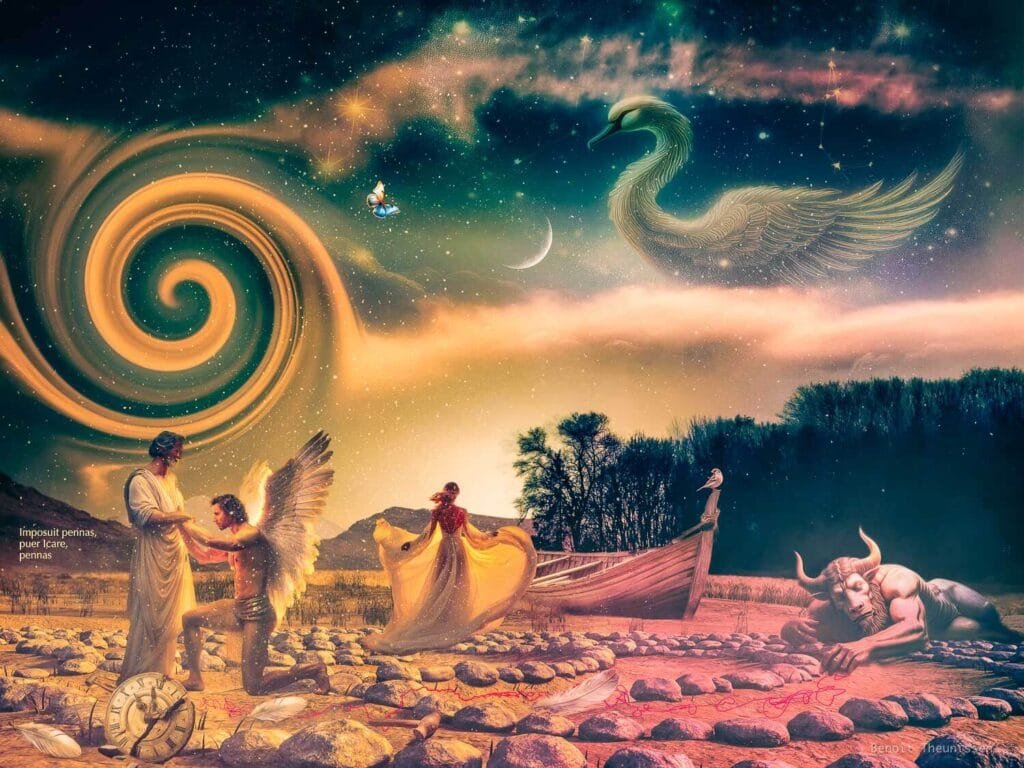
The art of changing course: Benoît moved away from purely figurative photography to explore surreal landscapes. Magritte, Dalí, symbols, archetypes… everything is there so that each image tells a story — sometimes mysterious, sometimes wild, but always deeply personal.
Wings of Wax and Trust – Collection Icarus
AI? A tool, not a master: He never lets AI decide for him. For research, atmospheres, and complex elements, it assists him but never replaces him. Sometimes he even asks it to play the critic — just to check he’s not the only one thinking, “wow!” at his own work.
The Dream Vessel – Collection Dreamlike Territories
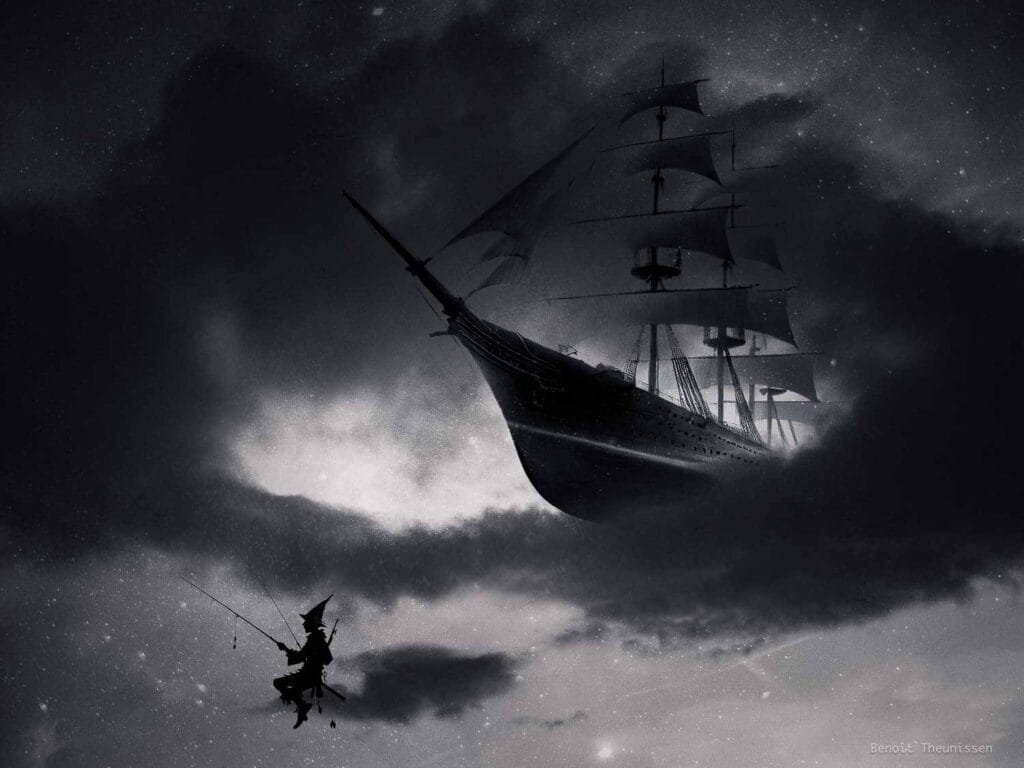
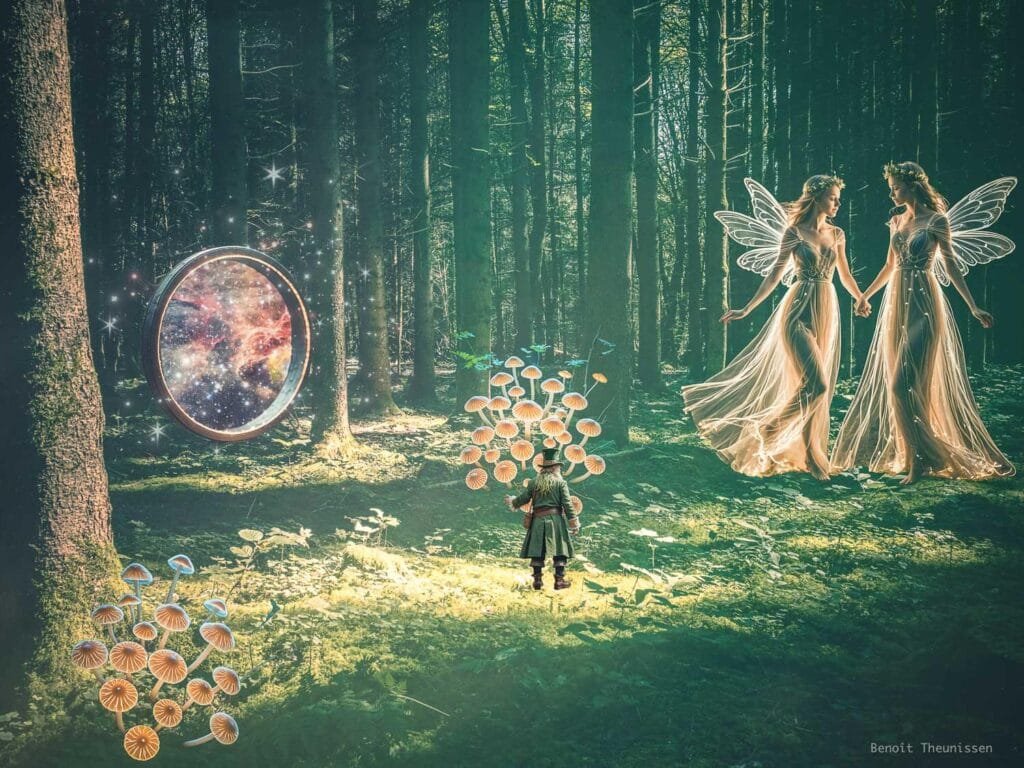
Back to fundamentals: Polaroids, sketchbooks, analog photography… Benoît always keeps his hands on the material. For him, AI is a lever, never a crutch. Machines may one day fail, but vision endures.
Portal to the Cosmos – Benoît Theunissen
Web3 and the metaverse — thoughtful experimentation: NFTs, virtual galleries, metaverse… Benoît tests it all, but never blindly. Experimentation is a playground, not a diktat.
The Night Circus – Collection Dreamlike Territories
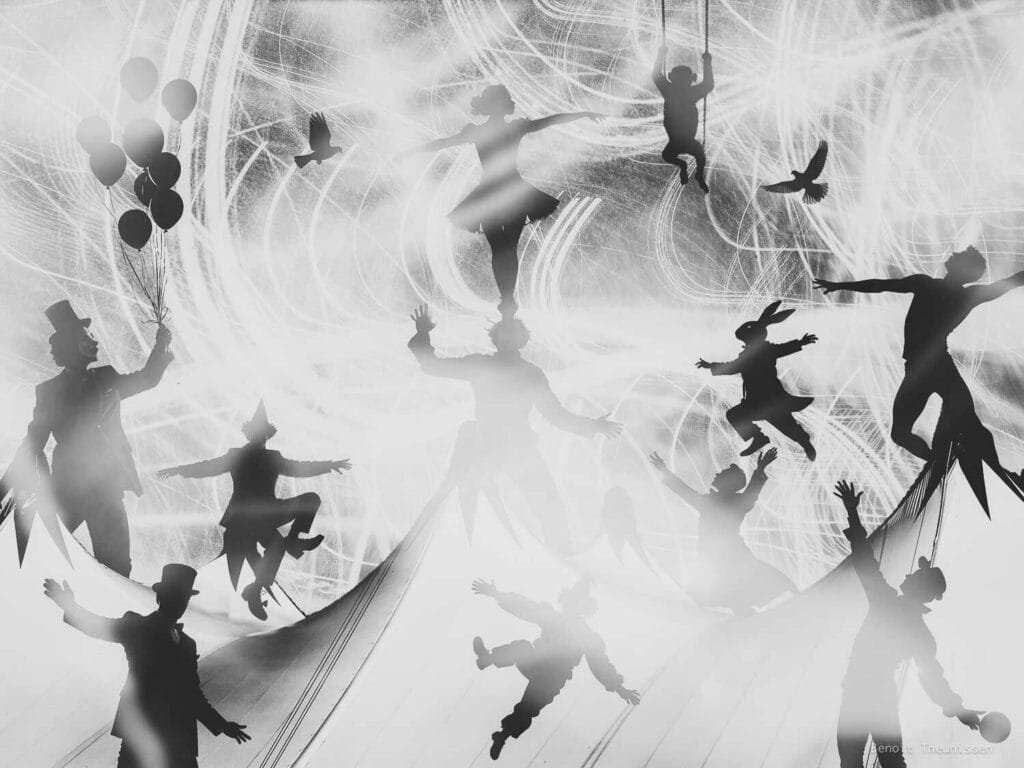
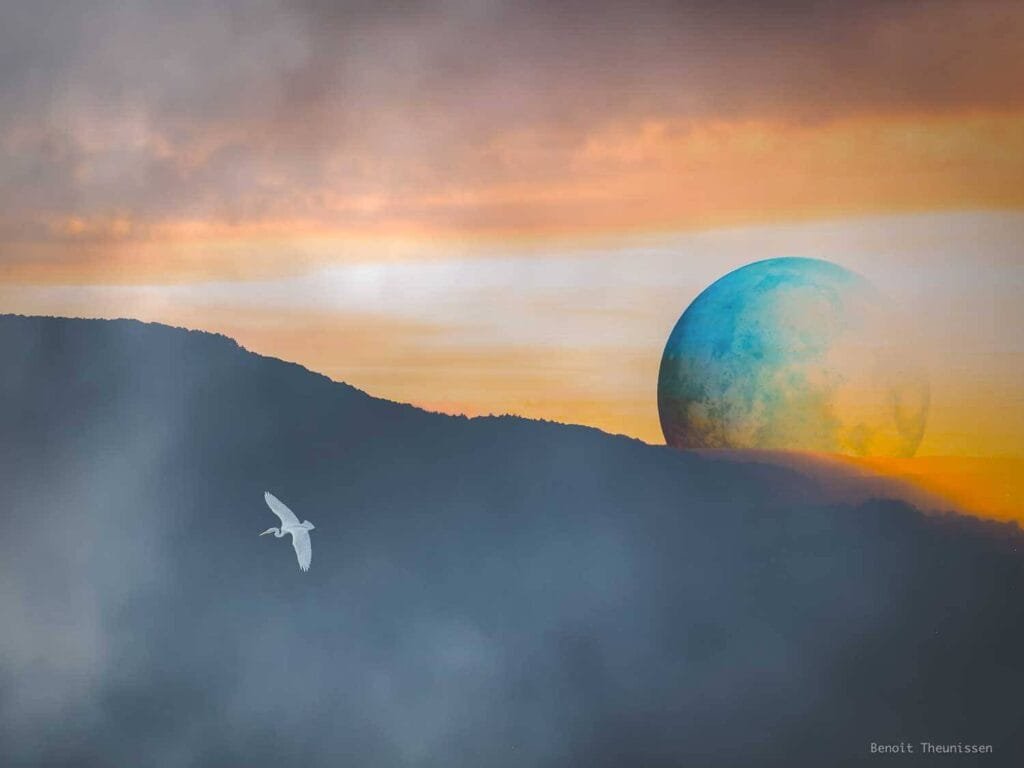
His advice to artists: Test, explore, critique. AI is no magic wand. Those who play the game wisely will go further; those who shut their eyes… risk missing the train.
Otherworldly Flight – Collection Dreamlike Territories
AI as an Ally
AI can enrich, but it will never replace the artist. The key? Staying true to yourself, cultivating your uniqueness, and using technology as a lever — not as a leash.
Benoît Theunissen is living proof: he trains algorithms instead of submitting to them, turning technological chaos into a creative playground. His works remind us that in the midst of machines, what still matters is the gaze, the imagination, the gentle madness that no equation can capture.
Because in the end, the future doesn’t belong to software — it belongs to those who dare to tame it without losing their voice.
👉 Curious to see how far it can go? Step into his universe at perspectivesbyben.com



